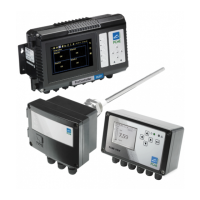- PCME STACK 990 MANUAL: 64 -
10 CALIBRATION
10.1 Introduction
The PCME Stack 990 sensors attached to the control unit can be calibrated in mg/m³ in certain
applications.
Calibration of each sensor is necessary on at least an annual basis and should be
carried out either by PCME or an authorised PCME representative.
The calibration is carried out with reference to an isokinetic sample (manual stack method). The
isokinetic sample should be carried out to the relevant standards as defined by your local
environmental authority or government agency.
At its simplest level, the calibration procedure is carried out to calculate a Calibration Factor used
to scale up the raw sensor readings into a true dust concentration value displayed directly in
mg/m³. The use of a simple calibration factor is possible since the response of the instrument is
directly proportional to the dust concentration over a predefined range.
10.2 Calculating the Calibration Factor
The basic method to calculate a new Calibration Factor a sensor uses the formula:
New Cal Factor = Current Cal Factor x (Test Result / Sensor Average)
The Test Result is the result obtained from a single sample of the stack.
The Current Cal Factor is the calibration factor entered into the instrument at the time of the
sampling.
The initial Cal factor setting is 1.0.
The Sensor Average is the average of the readings displayed in your control unit using the
current calibration factor.
Example
Sampling test result = 50mg/m3
Current Cal factor setting = 2.5
Instrument average = 20 units
New Cal factor = 2.5 x (50 / 20) = 6.25

